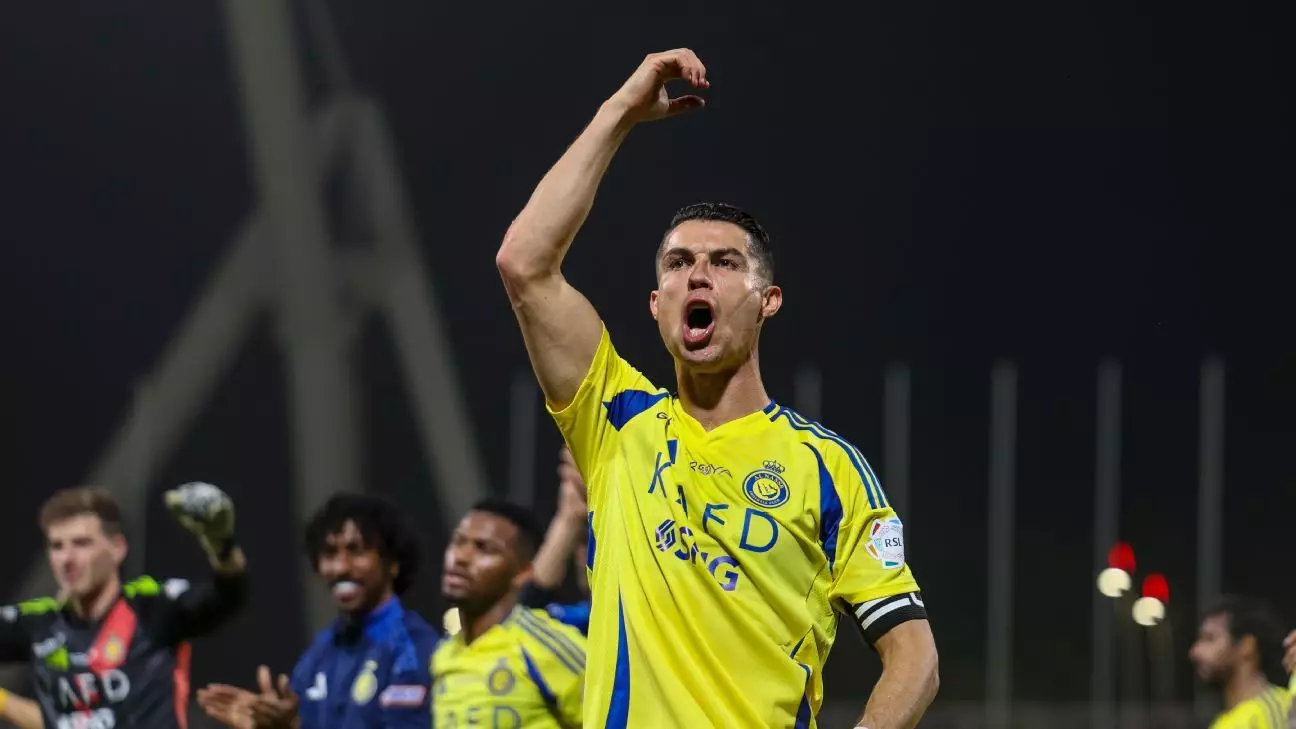The world of football transfer news is perpetually thrilling, and one of the most captivating stories currently revolves around Cristiano Ronaldo. At the age of 40, the forward continues to defy naysayers, scoring an impressive 30 goals in 34 appearances for Al Nassr this season. The Saudi Pro League club is reportedly keen on extending his tenure with a two-year contract offer. However, Ronaldo’s current contract does not expire until June 2025, raising speculations about his future trajectory in a sport that typically favors youth. He previously stated his intention to finish his career with Al Nassr, indicating a firm desire to remain in competitive football for the next two or three years. Whether this new offer will cement his commitment or spur further deliberations remains a topic of heated discussions among fans and analysts alike.
Critically, it begs the question of how long top-tier athletes can sustain their performance levels as they age, especially in a physically demanding sport. Ronaldo’s prowess is undisputed, yet how long can his body adhere to the expectations of professional football? The concern is not merely about scoring goals but of being able to keep pace with younger competitors who are more agile and resilient. For now, Ronaldo’s legacy remains intact, but this proposed contract raises significant questions about the balance between reputation and performance at an advancing age.
Barcelona’s Ambitions and the Threat of Saudi Investments
As Al Nassr pursues its contract extension with Ronaldo, Barcelona finds itself in a precarious position regarding potential signings, notably with its interest in Liverpool’s Luis Díaz. The Colombian winger has caught the eyes of numerous clubs across Europe due to his electrifying style of play. Barcelona’s attempts to lure him last summer were unsuccessful, and with new reports suggesting that a lucrative offer from the Saudi Pro League could deter his move this time around, the club’s strategy is at a critical juncture.
Díaz represents more than just a transfer target; he embodies Barcelona’s aspirations to revamp its squad with youthful talent. However, the financial might of clubs like Al Nassr presents a formidable challenge not only to Barcelona but to the broader European football landscape. This influx of Saudi investment raises ethical considerations regarding the source of funding and the implications for traditional powerhouses in European football, which should be explored earnestly. Are European clubs prepared to match the monetary allure being presented to players? Only time will tell, but the current climate undoubtedly encourages an uneasy competition between institutional pride and financial viability.
Emerging Talent: The Race for Young Stars
While the Ronaldo saga grabs headlines, other undercurrents in the transfer market are equally significant. With clubs like Napoli keen on Manchester United’s Alejandro Garnacho and Chelsea eyeing Ipswich striker Liam Delap, the spotlight is starting to shift from veteran players to emerging talents. The 22-year-old Delap, who has netted 12 goals this season, could be pivotal for Chelsea, especially given the club’s long-term strategy focusing on youth integration.
This shift in focus appears strategic as clubs assess the longevity of veteran players against the potential upsides of nurturing new talent. Investing in young players offers teams a blend of financial sense and a chance to build for the future; yet, this approach comes with inherent risks. Will clubs be willing to give these youngsters adequate playing time when the pressure to secure immediate results often dictates decisions? The balance between developing young prospects and achieving short-term success is one of the most critical dilemmas facing clubs today.
Market Dynamics: A Global Perspective
As the transfer window approaches, a confluence of factors is shaping the movement of players across leagues. The looming focus on younger players contrasts sharply with the immediate gains sought by teams in desperate need of instant results. The reported interests of clubs in established players from other leagues create a complex web of decisions, strategies, and potential deals that could drastically alter the landscape of European football.
Moreover, the ramifications of financial disparities across leagues cannot be ignored. With clubs from the Saudi Pro League attracting top talent through substantial financial offerings, European teams need to reconsider their approaches to recruitment and retention. Are they prepared to risk losing players to wealthier leagues simply because they can no longer compete financially? This existential question could reshape the fabric of European football as we know it, compelling clubs to innovate not just in player acquisition but also in their broader operational strategies.
With each passing transfer window, fans are treated to a complex ballet of ambition, rivalry, and economic warfare that promises perpetual excitement. What unfolds next in this ongoing saga will undoubtedly command attention from all corners of the globe—both for its implications on the sport and the passionate communities that surround it.


Leave a Reply